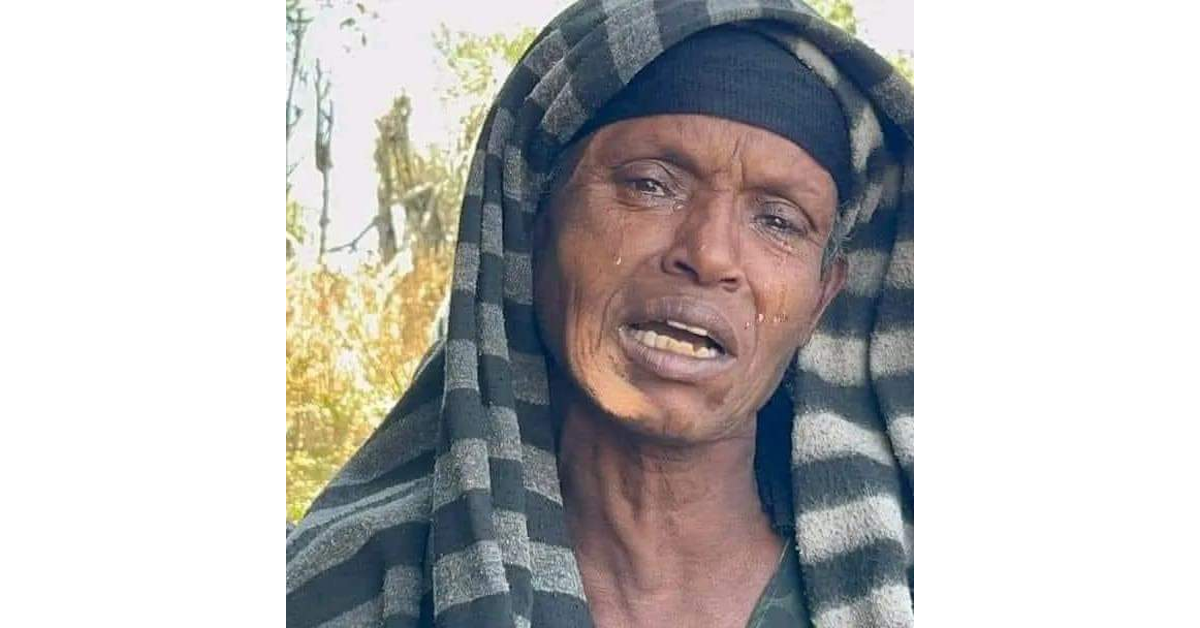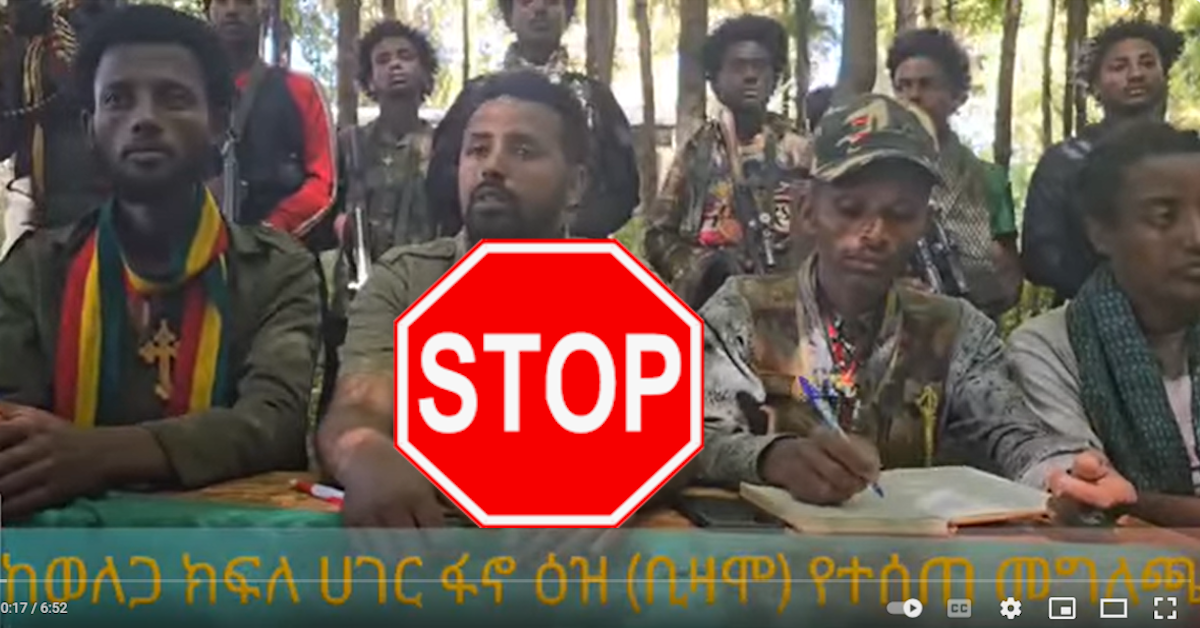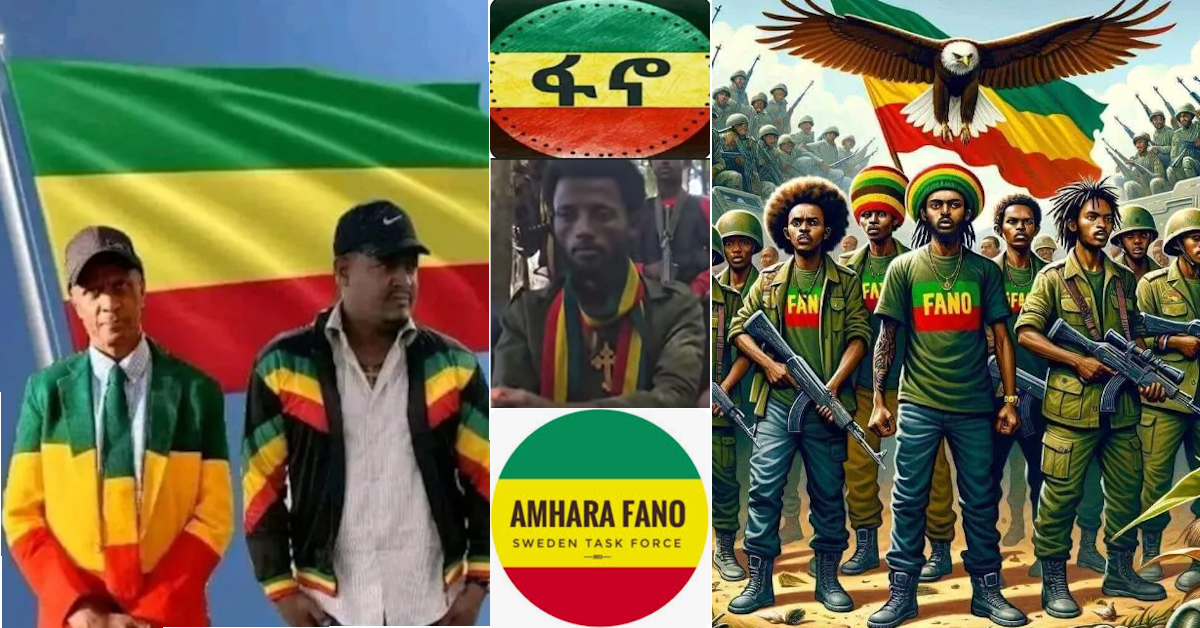I am staring at a photograph of a woman from northern Oromia, likely in her fifties. Her face, gaunt and weathered, seems sculpted by anguish. Her hollowed cheeks give prominence to her cheekbones, and tears streak across her broad but emaciated face. It is a face that embodies sorrow so intensely that I find it unforgettable—a visage of despair unmatched in its silent eloquence.
Northern Oromia has become a cauldron of unrest, plagued by the incursions of the Amhara Fano paramilitary groups. Their expansionist campaigns echo the Scramble for Africa of the 19th century, a tragic anachronism in the 21st. Yet, the Amhara elites remain relentless in their pursuit. To compound the agony, the federal army, the so-called protectors of the nation, has proven complicit, killing and maiming Oromos instead of safeguarding them. This unholy alliance of negligence and aggression underscores the profound helplessness etched into that woman’s tear-streaked face.
But make no mistake—this woman is not poor in the traditional sense. She is dispossessed, stripped of her livelihood and belongings by the marauding Amhara Fano militia. Her sadness is not born merely of loss but of profound betrayal: no law enforcement, no government entity, not even the Ethiopian National Defense Force (ENDF), stands to defend her. It is as if the very concept of justice has been erased in Oromia. Instead, the government turns a blind eye, preoccupied with Finfinnee (a.k.a Addis Ababa) and its political theater, while Oromia’s borders burn and its people are left to fend for themselves. The regional administration might as well not exist.
The image of this woman, her tears coursing down her face, is seared into my mind. Such images have a peculiar power. Why is it that some human expressions cut so deeply into our souls? I feel the weight of her story as if it were my own, a silent narrative transmitted to me through the photons that captured her face. That face has witnessed atrocities and endured injustices beyond the realm of ordinary comprehension, each line and shadow a testament to unspeakable pain.
Her photograph speaks louder than any words I could muster. Her moving images as video message is as profound. It challenges the complicit government, refutes the lies spun by Prosperity Party (PP) officials, and serves as a witness to history’s cruelty. It is an archive of human suffering that transcends language, an enduring record of a tragedy too vast for words.
It seems inconceivable that such suffering persists in the 21st century. Yet Ethiopia abounds with such stories, each more harrowing than the last. Oromos, rich in resources, find themselves cursed by their fortune. Their land is coveted, their autonomy denied, their prosperity sabotaged by a zero-sum game that others insist upon playing. This is not fate or divine will but deliberate, systemic cruelty. It is a continuation of over a century old saga of dispossession, perpetuated by those who fear Oromo empowerment as a threat to their own survival.
The culpability of the Amhara Fano militia is undeniable, but I reserve my harshest judgment for the Oromia PP officials. Allow me to elaborate.
Ethiopia, and particularly Oromia, is a land where rural poverty has deepened over decades. Farmers today are order of magnitude poorer than their counterparts were 50 years ago. Half a century ago, these farmers owned livestock, enjoyed access to basic necessities like dairy products, and rarely faced hunger. Today, many strain to afford even one meal a day. This is not mere stagnation; it is regression on an unfathomable scale.
What have Prime Minister Abiy Ahmed and Oromia President Shimelis Abdisa done to alleviate this predicament? Precious little. Instead, they have embarked on vanity projects—palatial constructions costing billions in the hill forests of Eekkaa and meadows of Boolee. These grotesque displays of wealth mock the suffering of the 85% of Oromia’s rural population mired in poverty.
Worse still, Shimelis’s administration actively exploits its people. Farmers are forced to surrender their livestock and crops to sustain ENDF soldiers stationed across Oromia in a futile campaign against the Oromo Liberation Army (OLA). While developed nations like the Europeans invest trillions in subsidizing their agricultural sectors, the Ethiopian government plunders its farmers’ meager resources to feed its military. This is not governance; it is state-sanctioned robbery. For a related article on this topic, refer to an article entitled: Oromia’s Endemic Corruption is Set to Impoverish the Already Poor Farmers (nearly two year-old at this writing).
Consider the term Calii Tuulamaa, a concept I recently encountered. It encapsulates the systematic dispossession of the Tuulamaa Oromo, a process initiated under Menelik II and accelerated under Abiy and Shimelis, far more intense than their bosses under the EPRDF regime of 1991-2018. Farmers are uprooted under the guise of investment projects that offer them no stake, no benefits, and no future. They are cast aside, their lands handed over to shady investment groups that enrich a select few (and profit sharing of PP officials) while impoverishing the many.
This is a land where Abiy Ahmed dismisses 85% of rural dwellers as inconsequential, their lack of modern amenities rendering them invisible to his administration. In a stunning display of callousness, Abiy recently boasted of Ethiopia’s electricity surplus and its sale to neighboring countries, ignoring the millions of Ethiopians who live without a light switch, running water, and cleansing facilities.
Meanwhile, PP officials lavish themselves with daily stipends of around 10,000 birr (for bed, food and drink of raw meat and whiskey), an amount that dwarfs the monthly income of most low-wage workers. The IMF-imposed taxes exacerbate this injustice, targeting even the meager assets of rural farmers, from poultry to cattle. It is a grotesque parody of governance, where the poor are squeezed to subsidize the opulence of the elite.
The contradictions are staggering. At a Prosperity Party 5th year anniversary, Abiy delivered a speech lauding his administration’s achievements, conveniently omitting the million lives lost under his watch. His narrative was Orwellian in its audacity, a denial of reality that would have astounded even George Orwell himself. Ethiopia in 2024 will undoubtedly surpass the dystopian reality depicted in Orwell’s 1984.
The hypocrisy extends to Ethiopia’s financial sector, where banks boast record-breaking dividends while the majority of citizens cannot afford a single meal a day. During their annual financial meetings and announcements, Awash Bank unashamedly boasted a 48% dividend return for its shareholders, while 85% of the population struggles to afford even a single meal a day. Many of the Ethiopian banks fall into this same league table. This raises the critical question: where did that wealth come from? Surely, one must rob Peter to pay Paul, right? In a well-regulated country, such a disproportionate dividend would warrant the intervention of bodies like a mergers and monopoly commission, as such diabolical profits are far from the norm. Meanwhile, the poor grow poorer, and the rich, richer. In Ethiopia, such institutional misbehaviors are highly celebrated.
Ethiopia, in 2024, has perfected the art of spinning lies into truth, of masking suffering with spectacle. Abiy recently advised citizens to leave leftovers in their front-yard refrigerators for the poor in order to fight inflation (presumably to be induced by IMF related economic policies), a suggestion so absurd it borders on satire.
The Ethiopian empire is a land where cruelty is policy, where dispossession is law, and where the dream of justice remains heartbreakingly out of reach. Oromia is even more deeply mired in despair, its people bearing the compounded weight of systemic neglect, targeted oppression, and relentless exploitation.
And yet, it is the face of that Oromo woman—etched with tears, grief, and defiance—that lingers. It tells a story no words can fully capture: a silent witness to unfathomable loss and resilience. Her face is not just a reminder of what has been endured, but a haunting question to the world: how long will we let this injustice persist?


